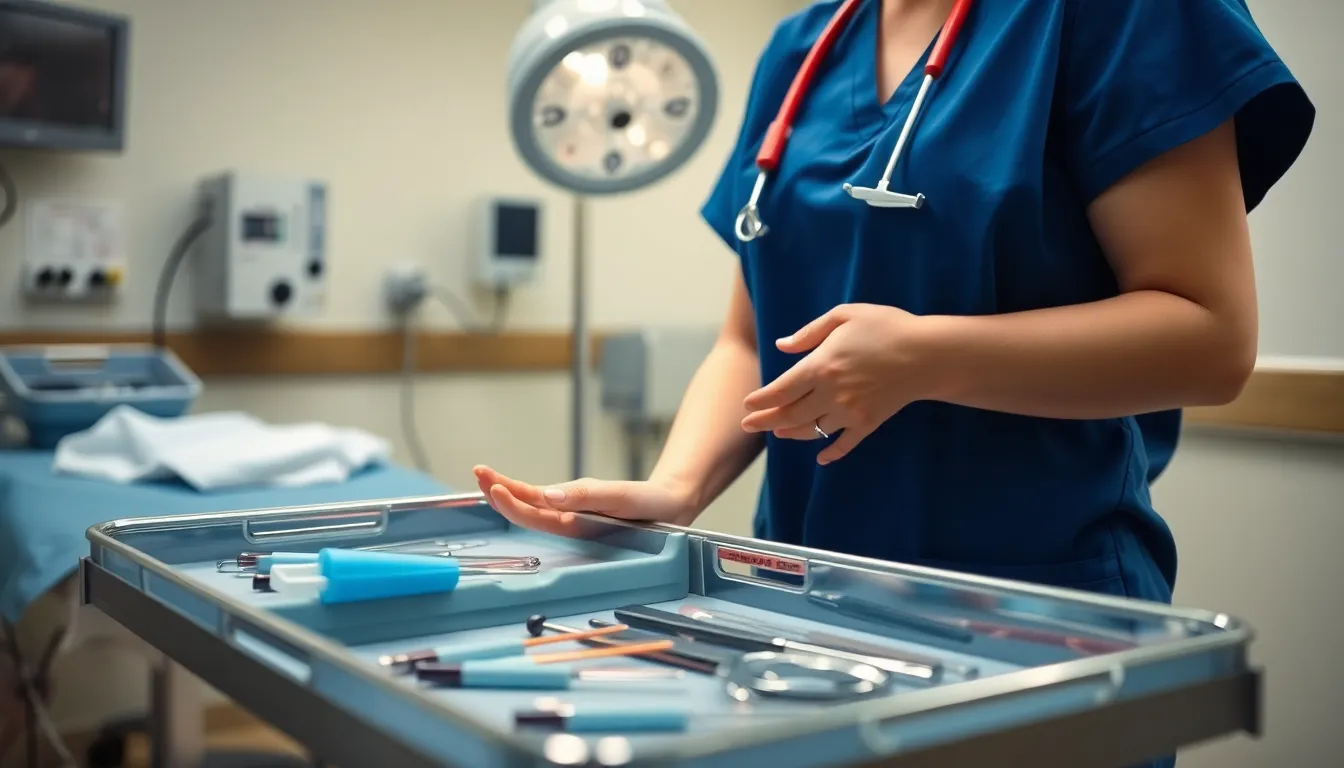Facing a breast biopsy can be a daunting experience for many women. The uncertainty surrounding the procedure often raises questions about pain and discomfort. Understanding what to expect can help alleviate some of that anxiety and empower individuals to make informed decisions about their health.
Breast biopsies are essential diagnostic tools that can provide crucial insights into breast health. While some may worry about the level of pain involved, it’s important to note that advancements in medical techniques and anesthesia have made the process more manageable. By exploring the pain factors associated with a breast biopsy, individuals can better prepare themselves for this important step in their healthcare journey.
Table of Contents
ToggleUnderstanding Breast Biopsies
Breast biopsies are essential procedures for evaluating abnormal breast tissue. They help diagnose conditions such as breast cancer and other issues by removing a sample for laboratory analysis.
What Is a Breast Biopsy?
A breast biopsy involves removing a small portion of breast tissue to determine the presence of disease. The tissue sample is examined under a microscope to identify abnormal cells or cancerous lesions. Biopsies are often recommended when imaging tests, like mammograms or ultrasounds, reveal suspicious areas.
Types of Breast Biopsies
Breast biopsies can be categorized into several types, each with specific techniques and purposes:
- Fine Needle Aspiration (FNA): Utilizes a thin needle to extract fluid or tissue from a lump. It’s minimally invasive, often performed with local anesthesia.
- Core Needle Biopsy: Involves a larger needle to remove small cylinders of tissue. This method provides more tissue than FNA and offers better diagnostic accuracy.
- Stereotactic Biopsy: Uses mammography to guide the needle to the precise location of an abnormality. It’s beneficial for detecting lesions not easily felt during physical exams.
- Ultrasound-Guided Biopsy: Employs ultrasound imaging to guide the needle for tissue sampling. It allows for real-time visualization, ensuring accuracy and minimizing discomfort.
- Surgical Biopsy: Performed under general anesthesia, this approach involves surgically removing a portion of breast tissue for examination. This method is typically employed when other biopsy types are inconclusive.
Each biopsy type varies in technique, invasiveness, and suitability based on individual circumstances, helping healthcare providers diagnose breast-related health concerns effectively.
How Painful Is a Breast Biopsy?

Breast biopsies vary in discomfort based on the method used and individual pain thresholds. Awareness of potential pain levels and influencing factors helps ease anxiety about the procedure.
Pain Levels During the Procedure
During a breast biopsy, most individuals experience minimal discomfort. Local anesthesia numbs the area, significantly reducing pain. Many report a sensation similar to a quick pinch or pressure rather than severe pain. Fine Needle Aspiration (FNA) tends to cause less discomfort compared to Core Needle Biopsies, while surgical biopsies may be more invasive, leading to heightened discomfort. Post-procedure, soreness, swelling, and bruising may occur, lasting a few days, but these symptoms typically resolve quickly.
Factors Influencing Pain Perception
Several factors affect pain perception during a breast biopsy:
- Type of Biopsy: Different techniques vary in invasiveness and associated discomfort.
- Local Anesthesia Efficacy: The effectiveness of anesthesia impacts pain levels. Properly administered anesthesia minimizes sensations.
- Individual Pain Tolerance: Personal pain thresholds differ, influencing subjective experiences of discomfort.
- Anxiety Levels: Higher anxiety can amplify perceived pain. Relaxation techniques may help mitigate this effect.
- Tissue Density: Denser breast tissue may result in a more intense sensation during the procedure.
Understanding these factors prepares individuals for the experience, promoting a smoother biopsy process.
Managing Pain and Discomfort
Managing pain and discomfort during a breast biopsy involves proper preparation and self-care. Understanding key strategies allows individuals to feel more in control of their experience.
Pre-Procedure Tips
- Discuss Concerns: Speak openly with the healthcare provider about pain management options. Knowing what to expect alleviates anxiety.
- Medication Guidelines: Follow instructions regarding medication use, especially anti-inflammatory drugs. Avoid taking blood thinners, such as aspirin, which could increase bleeding.
- Relaxation Techniques: Utilize relaxation methods before the biopsy. Techniques like deep breathing can help reduce anxiety.
- Hydration and Nutrition: Stay hydrated and eat light meals beforehand. A well-fueled body can enhance comfort during the procedure.
- Arrive Early: Arriving early allows time to acclimate to the environment. This can decrease stress levels significantly.
Post-Procedure Care
- Follow-Up Instructions: Adhere strictly to the post-procedure care guidelines provided by healthcare staff. These instructions often include wound care and activity restrictions.
- Pain Management: Use over-the-counter pain relief as directed. Non-prescription medications like ibuprofen can alleviate mild pain or soreness.
- Observe for Symptoms: Monitor for symptoms such as excessive swelling, redness, or discharge. Contact a healthcare provider if these occur.
- Rest and Recover: Allow ample time for recovery. Avoid strenuous activities for a few days to facilitate healing.
- Emotional Support: Seek support from friends or support groups. Managing emotions related to biopsy results can contribute to overall well-being.
Patient Experiences and Testimonials
Patient experiences regarding breast biopsies often reveal a spectrum of emotions and sensations. Many individuals report anxiety before the procedure, which tends to diminish once they understand the process.
- Minimal Discomfort: Numerous patients describe the pain during Fine Needle Aspiration as slight. They often mention feeling only a brief pinch or pressure at the injection site due to local anesthesia. This technique, commonly used for fluid evaluations, generally results in less discomfort compared to other methods.
- Core Needle Biopsy Insights: Others share experiences from Core Needle Biopsies. While some note a bit more pain during the procedure, many emphasize that the procedure is tolerable. Patients frequently appreciate the staff’s support, which helps them stay calm and focused.
- Surgical Biopsy Accounts: Patients undergoing Surgical Biopsies often report greater discomfort. They highlight the importance of anesthesia in managing pain effectively. Post-operative testimonials include mentions of soreness and bruising, yet most indicate the pain subsides within a few days.
- Personal Preparations: Many individuals find that thorough preparation aids their comfort level. Sharing concerns with healthcare providers before the biopsy and using relaxation techniques, such as deep breathing or visualization, enhances their experience.
Understanding these testimonials helps others facing a breast biopsy feel more informed and less anxious. Each individual’s experience is unique, yet most accounts reveal that with the right strategies and support, managing pain effectively during breast biopsies is achievable.
Understanding the experience of a breast biopsy can significantly ease anxiety and discomfort for those undergoing the procedure. With advancements in medical techniques and effective anesthesia, pain management has improved remarkably. Most individuals report minimal discomfort, making the biopsy a more manageable experience than anticipated.
Preparation and self-care play vital roles in enhancing comfort levels. By discussing concerns with healthcare providers and utilizing relaxation techniques, patients can approach the procedure with greater confidence. Ultimately, knowing what to expect can transform a daunting experience into a more positive one, allowing individuals to focus on their breast health and the importance of early diagnosis.


